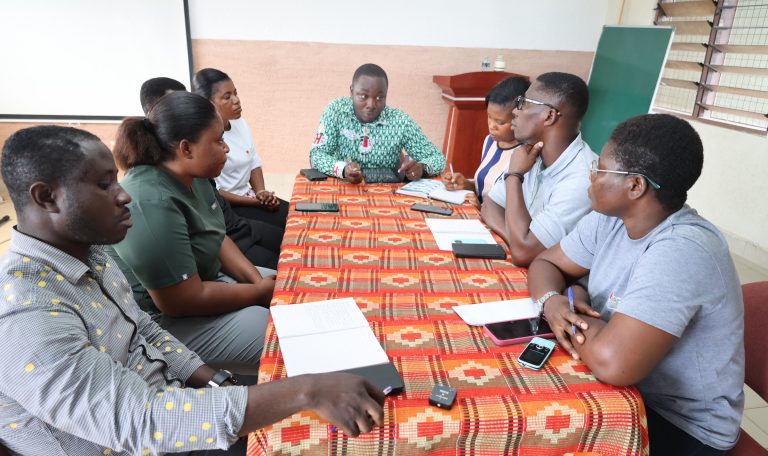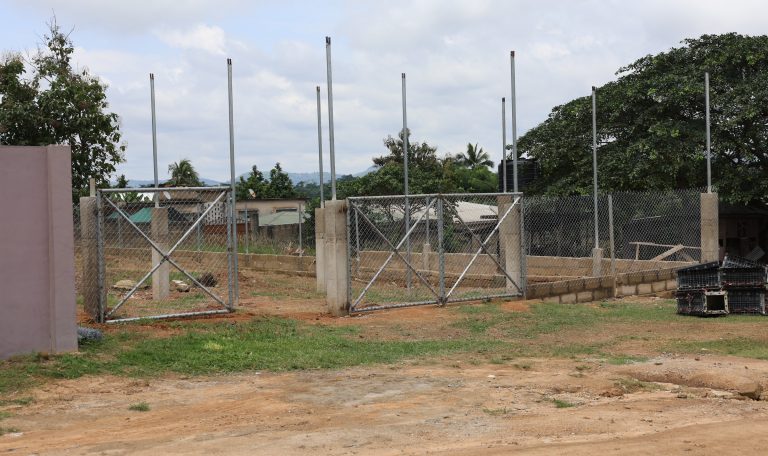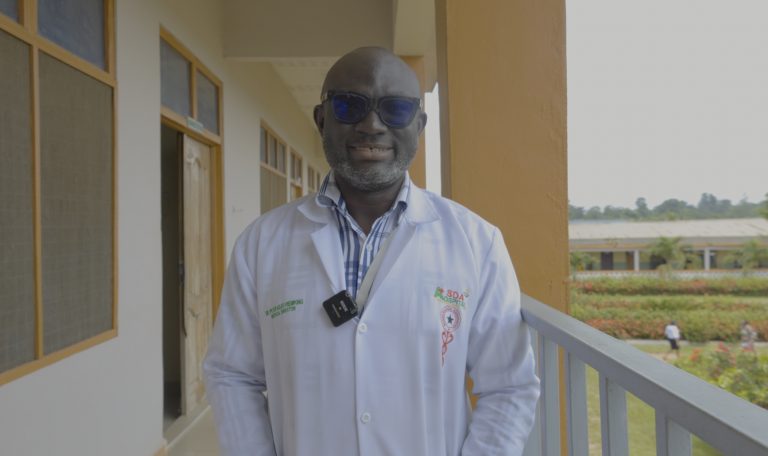Asamang SDA Hospital in the Ashanti Region of Ghana has instituted new waste management measures to curb needle pricks and infections.
A year ago, you wouldn’t have expected to spot trails of smiles on Buabeng Acheampong’s face. Who would, when needle pricks are having a field day at the wards, affecting both medical and non-medical staff?
As the Quality Improvement Manager, Buabeng faced the challenge of addressing this issue. “Our staff were getting needle pricks after retrieving bin liners from the dustbins,” he said. “This was happening because some staff, overwhelmed with work, were dropping needles in areas where they shouldn’t, instead of the sharp boxes.”
However, at their weekly quality improvement meeting, Mr. Acheampong was happy to brief the team about a major success. The menace of needle pricks had finally been addressed.
“Last year, we recorded 8 orderlies getting needle pricks and 3 nurses and midwives,” he said. “Since last November, we’ve had zero needle pricks.”

Color-coded bins
In 2023, when four members of the group had the opportunity to participate in the Quality Improvement course offered by Africa Health Collaborative in partnership with the Mastercard Foundation, they realized the inadequate attention given to waste management at the hospital. The project “Waste Management and Segregation” was thus born.
“We’re in the middle of the community,” he explained. “The medical waste we generate here has the potential to cause other illnesses in the community if not managed properly. From other assessments, although we knew we were improving, we realized that the progress was marginal.”
The project, which has a one-year duration, is divided into three phases. The first phase involved color-coding the waste bins. The team allocated blue bins for general waste and red for medical waste. Sharp boxes were also placed at several parts of the ward, and staff who forget to properly dispose of needles are fined.

As part of the first phase, the waste site was also fenced to prevent both humans and animals from coming into contact with the waste.
The second phase involves roofing and proper allocation of the bins, and the third phase will be the construction of an incinerator.
“We’re hoping the last two phases will be completed by the end of November,” he said optimistically.

QI Parliament
With over 30 units, the QI team has also instituted the Quality Improvement Parliament, which has representatives from all the units. This move has impressed the Medical Director of Asamang SDA Government Hospital, Dr. Adjei Frimpong.
He said, “Representatives from the various units serve as members of the parliament and come together to discuss various projects that may bring improvement to our various facilities. We want the changes to come from the staff themselves. When the staff lead change, they take hold of it and work so hard to ensure that the needed results are achieved.”
Dr. Frimpong expressed gratitude to Mastercard Foundation and KNUST for this opportunity. “As management, we promise that this training provided to our staff will be expanded to produce the necessary results for us,” he said. “We believe Asamang will become the hub of quality in the coming years.”




Comments (1)
Richard Torgbo - October 7, 2024
Kudos to the indefatigable team. Asamang SDA Hospital will be definitely be a QI Hub.